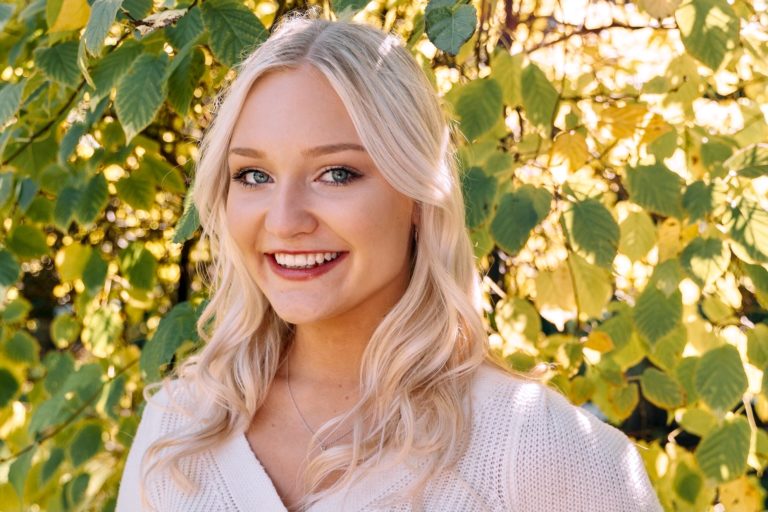A multi-decade retrospective of one of the most important abstract artists of our time, who also is a graduate of Michigan State University, is now on display at the Eli and Edythe Broad Art Museum (MSU Broad Art Museum) through Dec. 15, 2024.
The MSU Broad Art Museum organized the exhibition, “Samia Halaby: Eye Witness,” which took more than two years to plan. It is a type of homecoming for Samia Halaby, who, from 1959 to 1960, attended Michigan State University where she earned an M.A. in Painting. It was at MSU that Halaby began painting in earnest with oil on canvas and where she more seriously pursued her ambition to be an abstract painter.
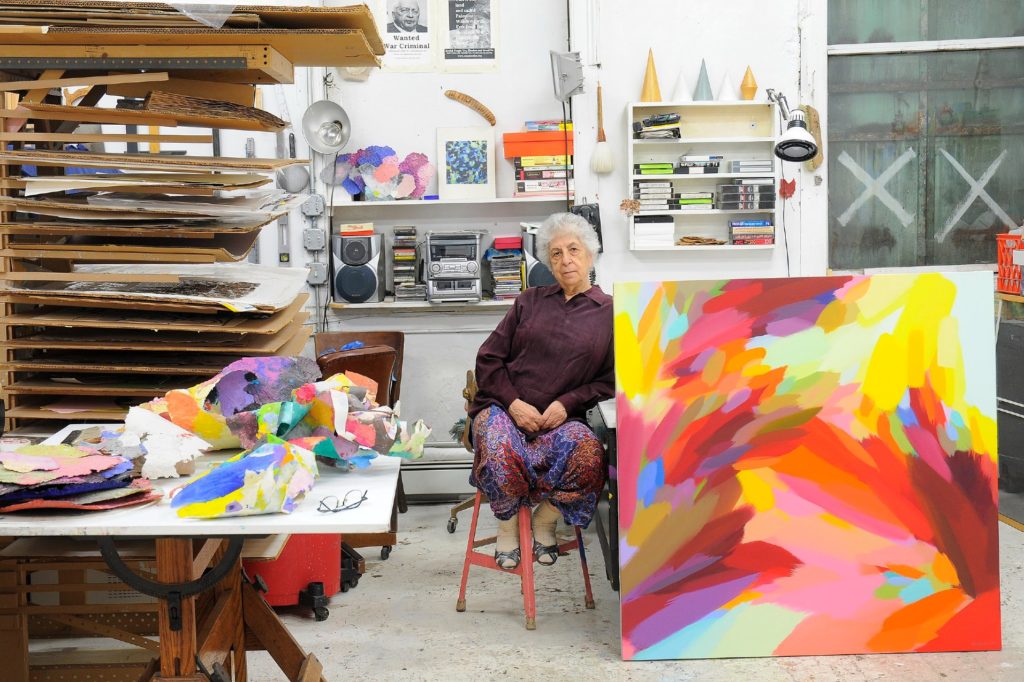
Born in Jerusalem, Halaby moved to the United States with her family when she was 14. She started her teaching career in the Midwest, using her time as an educator to introduce groundbreaking undergraduate studio art instruction to art departments across the region. An influential scholar of Palestinian art and a trailblazer in contemporary abstract art in the Arab world, Halaby later became the first woman to hold the position of Associate Professor at the Yale School of Art.
“My education and teaching years in the Midwest formed a very important part of my maturing as a painter,” she said. “I am pleased that the Eli and Edythe Broad Art Museum at Michigan State University, my alma mater, has prepared a retrospective. It is also meaningful that my paintings are hanging in an architectural space designed by the great Zaha Hadid, the first woman to win the Pritzker Architecture Prize.”
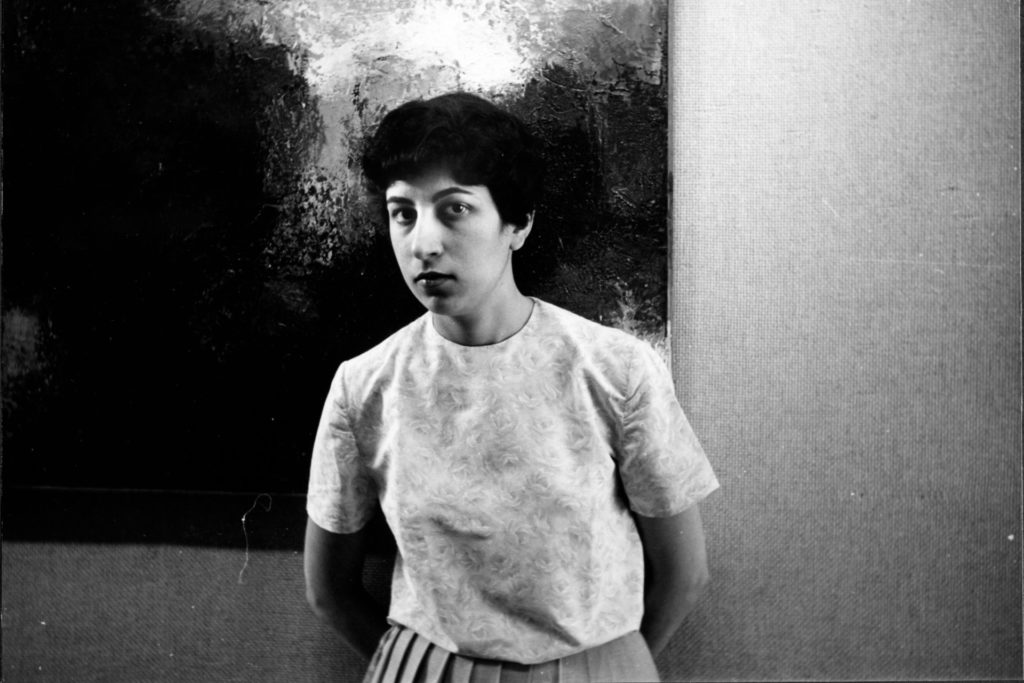
Featuring more than 60 works, “Eye Witness” chronicles Halaby’s artistic journey starting in the 1950s. The comprehensive survey leads audiences through her monumental artistic career with paintings, digital work, sculptures, and drawings.
“To present nearly seven decades of painting by an important and prolific artist is no easy feat and requires years of research, thought, and planning,” explained Rachel Winter, who curated the exhibition for the MSU Broad Art Museum. “This exhibition presents Halaby’s work through the lens of place in order to understand how her visual language changed as she moved between the Midwest, New York, Europe, and the Arab world, an approach that has been developed in conversation with Halaby over the last two years.”
Halaby is known for merging artistic styles and movements. In her works, she reconceptualizes the Islamic tradition of geometric abstraction in architecture and Western approaches to abstract painting. She also finds inspiration in nature, particularly in natural elements from Palestine such as the olive tree. Halaby’s art is layered with vibrant colors that convey joy and optimism as she proposes new ways of seeing and being in the world.
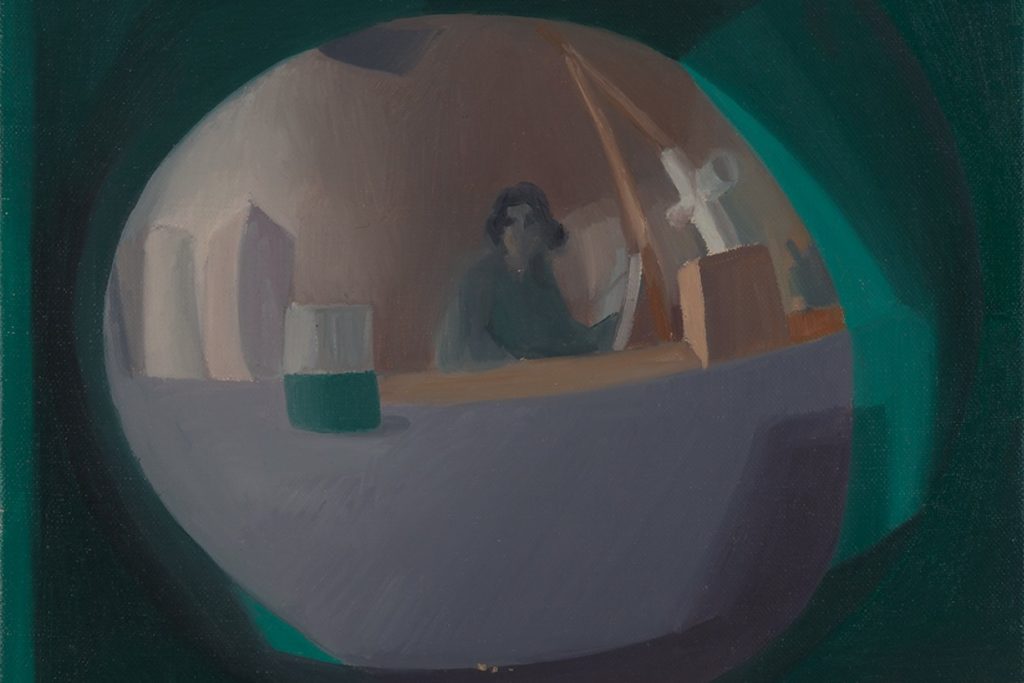
“By thinking about the ways that abstraction can help us understand general principles, like motion in a city or growth in nature, Halaby encourages people to find meaning in her work through active viewing,” Winter said. “And we’re excited to have an interactive component in the exhibition that connects to this idea. The exercise will help viewers think about places important to them and then express that through abstraction.”
The exhibition thoughtfully explores the artist’s roots — including her connection to Michigan — while exposing audiences to a living artist whose work is held in museum collections around the world including the Guggenheim Museum (New York), Guggenheim Abu Dhabi (United Arab Emirates), Art Institute of Chicago, Detroit Institute of Arts, Cleveland Museum of Art, Jordan National Gallery of Fine Arts (Amman, Jordan), British Museum (London), Institut du Monde Arabe (Paris), and Birzeit University (Ramallah, Palestine).
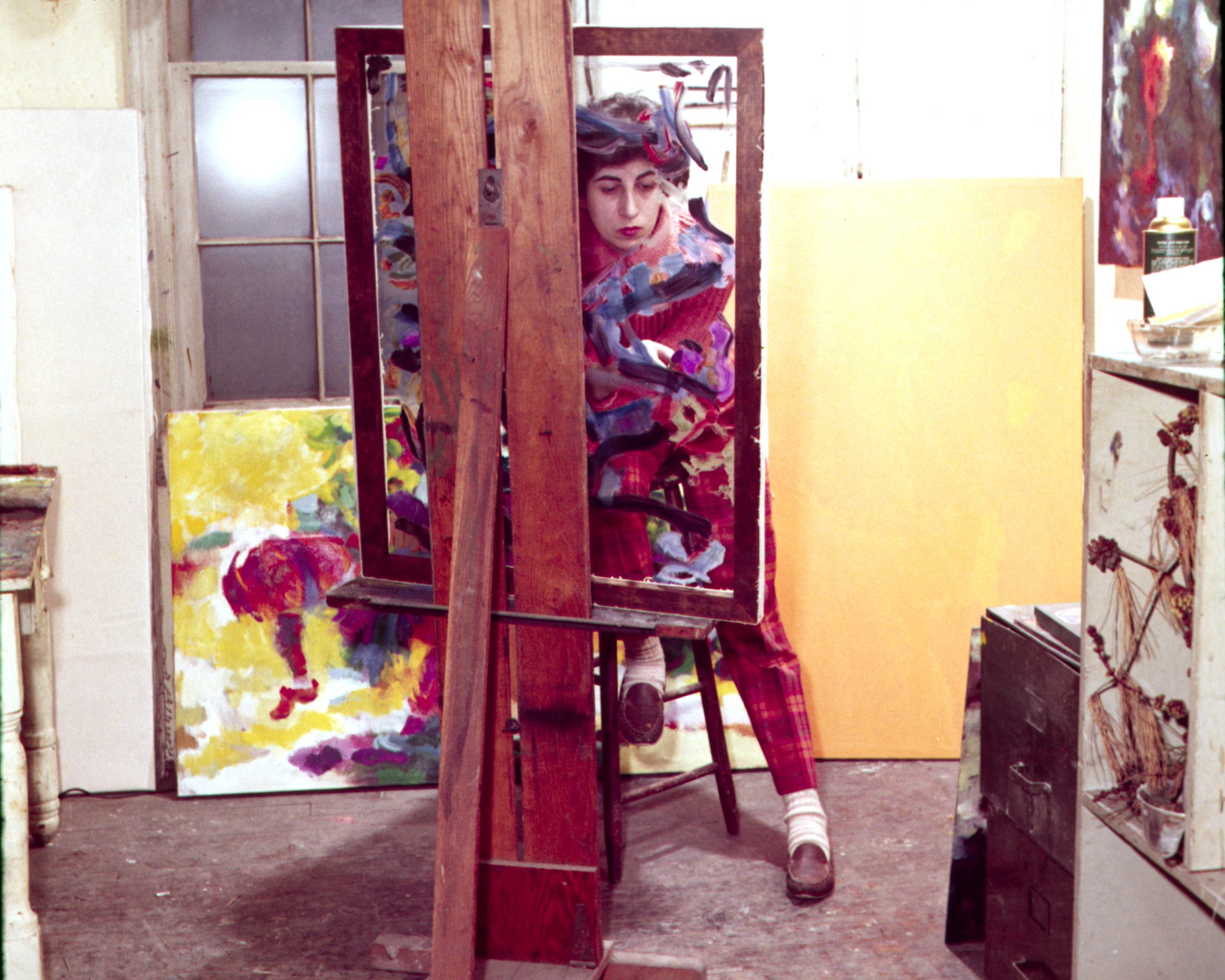
The exhibition also celebrates the ways in which the Midwest continues to be a powerful locus for creative innovation — and showcases an artist who demonstrates Michigan’s cultural diversity.
“We are intentional about representing the communities we serve with our exhibitions and bringing forward conversations of local relevance and global significance,” said Steven L. Bridges, Interim Director of the MSU Broad Art Museum. “Michigan is home to one of the largest Arab populations in the U.S. Presenting the work of a Palestinian artist in diaspora provides an opportunity to think more expansively about Michigan’s history and the contributions to the arts that have happened here and continue to influence future generations of artists.”
This exhibition is made possible through support from the Terra Foundation for American Art and the Eli and Edythe Broad Endowed Exhibitions Fund, with additional support from the Kathleen D. and Milton E. Muelder Endowment for Kresge Art Museum and the MSU Humanities and Arts Research Program.


